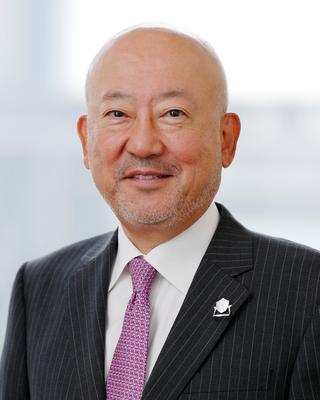Column 2021.05.10
Inflation: Anxiety or Hope?

Inflation has begun to loom large in US financial markets against the background of stepped-up fiscal spending of the US government. In early 2021 a fiscal spending worth 9 percent of GDP was decided to be applied to the US economy, which had a GDP gap of less than 5 percent of GDP. In addition, the Biden-Harris Administration has announced an infrastructure-related spending program for the next eight years, worth 10 percent of GDP, which is to be followed by another spending program of a similar magnitude.
Half a year ago, when I wrote “Beyond the Pandemic of 2020” in this column, US economic fundamentals seemed tilted toward inflation. I expected fiscal spending to continue increasing in tandem with populism on the political front, but the actual dollar amount of the spending has gone well beyond my expectation, illustrating the vigor of fiscal policy makers.
Treasury Secretary Yellen says that a K-shaped economic recovery is underway and she aims her policy at raising the downward slope of the K. The K is meant to symbolize not only the economic developments in the wake of the pandemic of 2020 but the economic disparity which became increasingly salient under the previous US administration. In other words, she will try to increase incomes of those who have been left behind from economic growth over the years.
Quite a few policy makers at the Federal Reserve also say that they intend to achieve an “inclusive recovery,” viz., recovery without losers. In terms of policy, the Fed has decided to maintain its target interest-rate range until inflation has risen to 2 percent and is on track to moderately exceed 2 percent for some time.
Economic disparity is large in the US, indeed. I witnessed it soon after I began to live there in the late 1970s. Disparity has since widened further, culminating during the ongoing pandemic. Against the background of this disparity, America is now often referred to as a divided nation.
“America has been created by design whereas Europe and Japan were born by nature.” A political science professor at a US university, born in Germany, told me thirty years ago, when he visited Tokyo amidst the Japan Bashing boom of the early 1990s. He added to it by saying, “No confidence in design of the system, therefore, means a loss of the foundation of the country.”
Whenever a crisis has threatened the system, the US authorities have mustered efforts to mobilize policies to address the crisis. I witnessed such episodes over the years either at a near distance or in the field, e.g., quantitative monetary tightening in 1979, Latin American debt crisis in 1982, the Plaza Agreement of 1985, the Asian Currency Crisis of 1997, and the Global Financial Crisis of 2008.
While grappling with an immediate threat in full force, Americans sometimes close their eyes to risks for the future. With respect to the economic policy at present, achievement of an inclusive economic growth will need wage increases in a wide range of job markets. Will this policy end up being just fine for inflation of a little over 2 percent on average? Should inflation flare up and monetary policy be to address it belatedly, monetary tightening would become acute, entailing high interest rates cum high inflation, and possibly inviting a stagflation. In a society under inflation, people are susceptible to excitement in contrast to the low spirits of a deflationary society, like it or not!
US policy makers may be aware of all this. However, they may be considering that they will never be able to solve the problem of the divided nation, which undermines the very foundation of the country, if they fail to act now, being mindful of future risks. Address the future problem as it draws near! If the policy makers think this way, a paradigm shift in its economy and society may be in the offing.